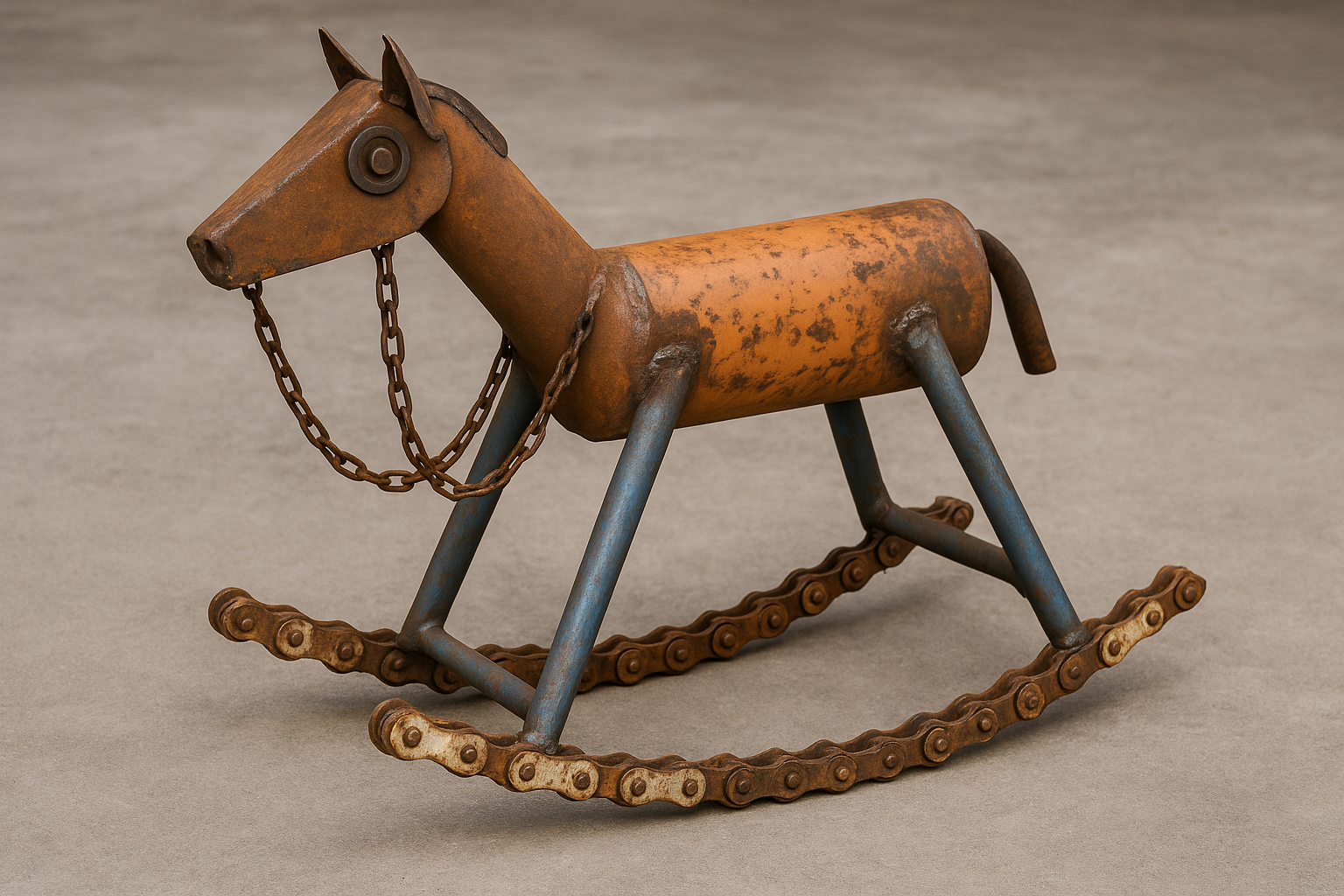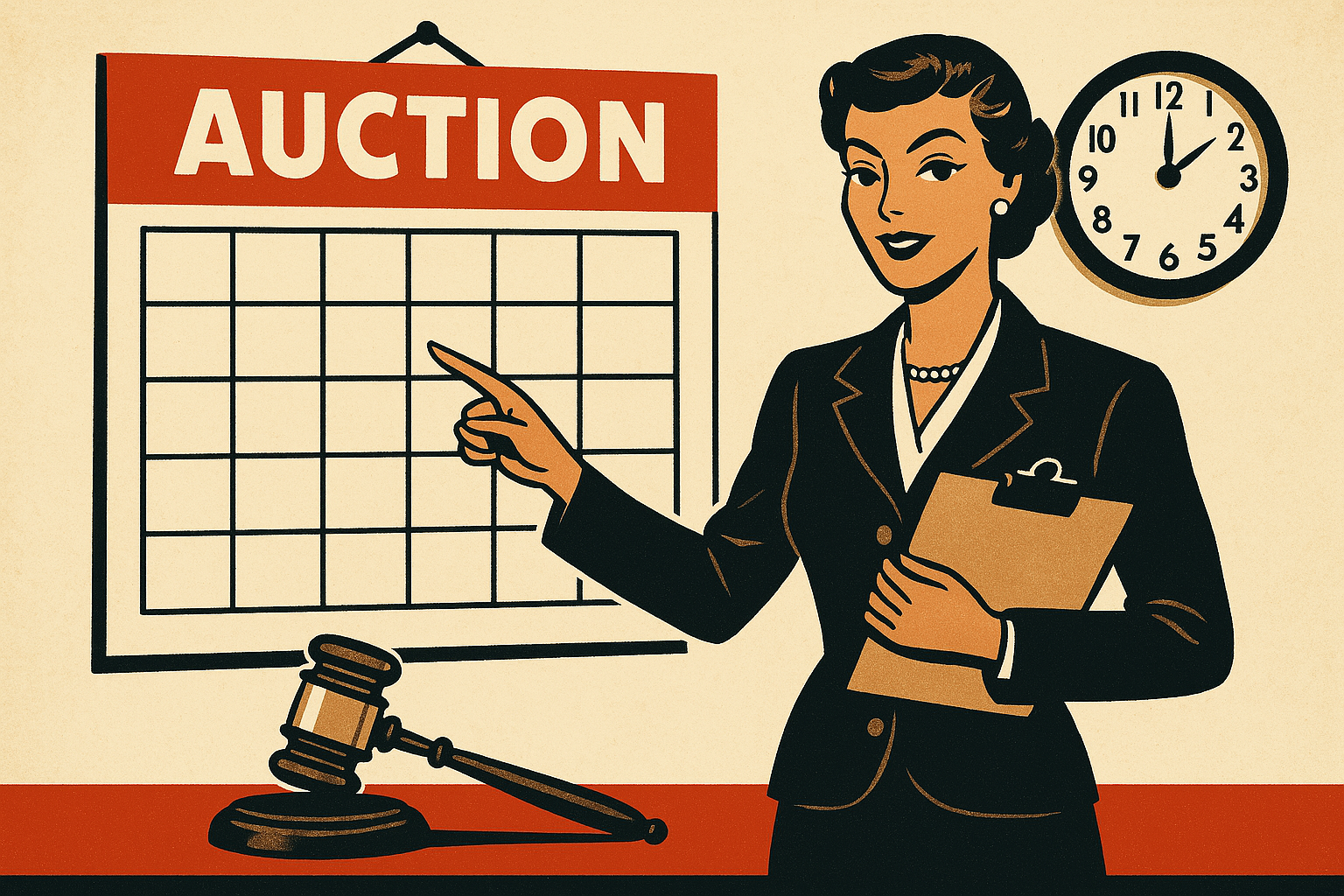3 min read
Winning Big with Small Budgets: Guerrilla Auction Marketing
When I was an auctioneer at West Auctions, I learned quickly that big marketing budgets aren't always the answer. Sure, traditional advertising works...

We all know the old saying: every object has a story. But in the auction world, the better version is: every object is a story - if you tell it right.
Too often, estate auction listings stop at the basics: dimensions, material, maybe a vague nod to condition. But people don’t get excited about “vintage coffee table, fair condition.” What catches eyes and fuels bids is narrative; a sense of history, utility, curiosity, or humor.
That’s not fluff. It’s marketing.
Auctioneers, especially those in estate liquidation, are in the business of trust and transformation. You're helping sellers part with history, and you're inviting buyers to imagine a future. A well-written title or a photo that sparks emotion can mean the difference between a casual scroll and a bidding war.
When done right, storytelling:
Increases perceived value by framing the item with context or intrigue
Improves SEO with longer-tail keywords and richer metadata
Boosts engagement with more shares, clicks, and bids
Helps the media take notice (journalists love quirky, well-presented finds)
Let’s break down where the stories begin.
A good title is more than a label. It’s a headline. “Antique Table” is a commodity. “Early 1900s Oak Farm Table with Knife Marks & Paint Spatter” is a conversation starter.
Start with the category: “Mid-Century Sofa”
Add key features: “in Rosewood with Original Wool Upholstery”
Include optional hooks: “From Los Angeles Architect’s Estate”
Search engines love specifics. So do bidders.
Descriptions should do three things: inform, reassure, and entertain.
Solid walnut rocking chair, likely 1930s, with ladder-back slats and wide arms. Surface wear from decades of use but structurally sound. Possibly handmade. Found in a farmhouse near Cedar Rapids, where you can imagine it spent many winters by the fireplace and summers on a screened porch.
You're not making anything up. You're telling what’s true with a human touch.
If you were introducing this object at a dinner party, how would you do it? Now dial that back 20% and put it in your listing.
Photos sell the story. That means more than just “front, back, side.”
Natural light, even if it means moving to a window
Close-ups of wear, markings, and details
Contextual shots: a lamp on a table, a tractor in a field
Include scale: a coffee cup, a person’s hand, or even a yardstick
Remember, online auction bidders can’t pick things up for a good look while they are placing their bids. Good photos build trust and feed the bidders' imagination.
A 15-second video can go a long way. Walk around the object. Show it in motion if it rocks, rotates, or runs. Narrate a few quick facts. It doesn't have to be professionally-shot. In fact, less polished videos often perform better.
Most smartphones shoot high-quality video. Upload them to YouTube, add them to your listing and promote them on social media. Not only will the bidders appreciate the video, but the search engine bots will gobble it up! Keep in mind that even though YouTube is usually thought of as a video-sharing platform, it is also the world's second-largest search engine!
Creating great descriptions takes time. Many auctioneers don’t have hours to spend crafting prose for every lot. That’s where AI tools like ChatGPT or Claude come in.
Voice dictate a few facts while cataloging.
Paste them into ChatGPT with a prompt like:
“Turn these plain item details into a compelling, fact-based auction listing with warm, descriptive language that sparks interest, respects the item's history, and avoids exaggeration.”
Edit the result to match your tone and remove any hallucinations.
You still keep your voice, but you save yourself keystrokes.
I whipped up a Custom GPT to demonstrate this process for you. You can view a Loom video of the GPT below and you're welcome to try it yourself.
If you’re running estate sales, you’ve already got an advantage. Every item was part of someone’s life. Whether it’s a WWII footlocker, a dusty box of postcards, or a Danish serving tray from the ’60s, there’s a story waiting to be told.
And buyers love discovering these moments. That’s how auction listings go from listings to links that are shared in Facebook groups, reposted by collectors, or even picked up by local press.
No one expects Shakespeare. Just be real. Be curious. Be concise. You’re not just selling an object... You’re offering a moment, a memory, a possibility. That's how you take the auction method of marketing to the next level.
Want to work with technology professionals who understand the auction method of marketing?
AuctionMethod Co-Founder Daniel West is a lifelong auction professional and visionary. When Daniel and his brothers needed integrated invoicing, communication, reporting, and payment tools to run their family auction business efficiently, they combined their knowledge of the auction world with their passion for technology and built them themselves. What began years ago as an internal fix has grown into a full-service solution trusted by auctioneers of all kinds. Today, Daniel helps auction companies optimize operations, grow their businesses, and keep more of every dollar they earn.
.png)
3 min read
When I was an auctioneer at West Auctions, I learned quickly that big marketing budgets aren't always the answer. Sure, traditional advertising works...
.png)
2 min read
The Hyper-Local Auction Advantage The online auction space is booming, but not all growth comes from large, national platforms. A new breed of...

2 min read
Getting the timing right can make or break an online auction. At AuctionMethod, we’ve worked with hundreds of auction companies over the years, and...